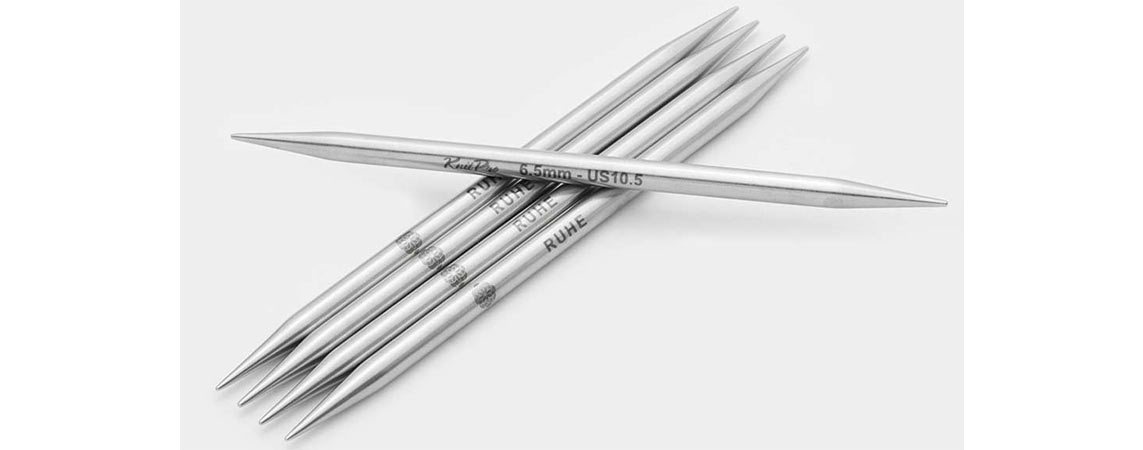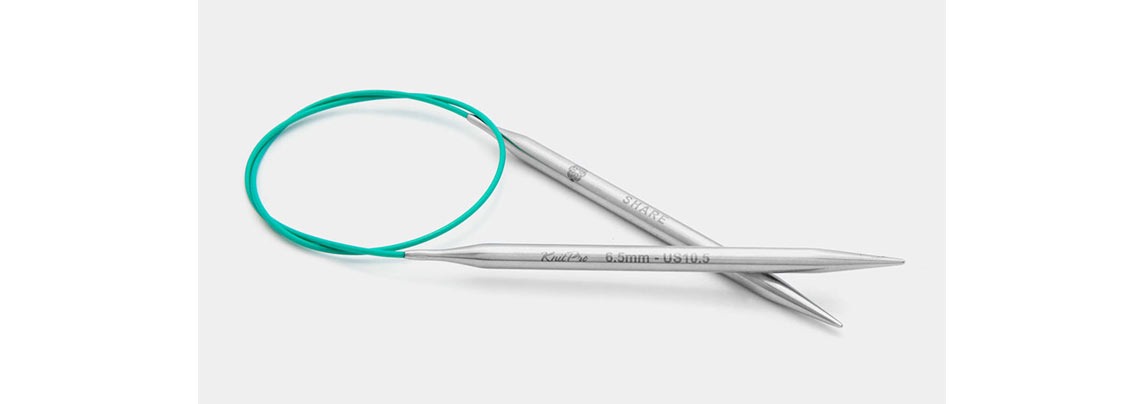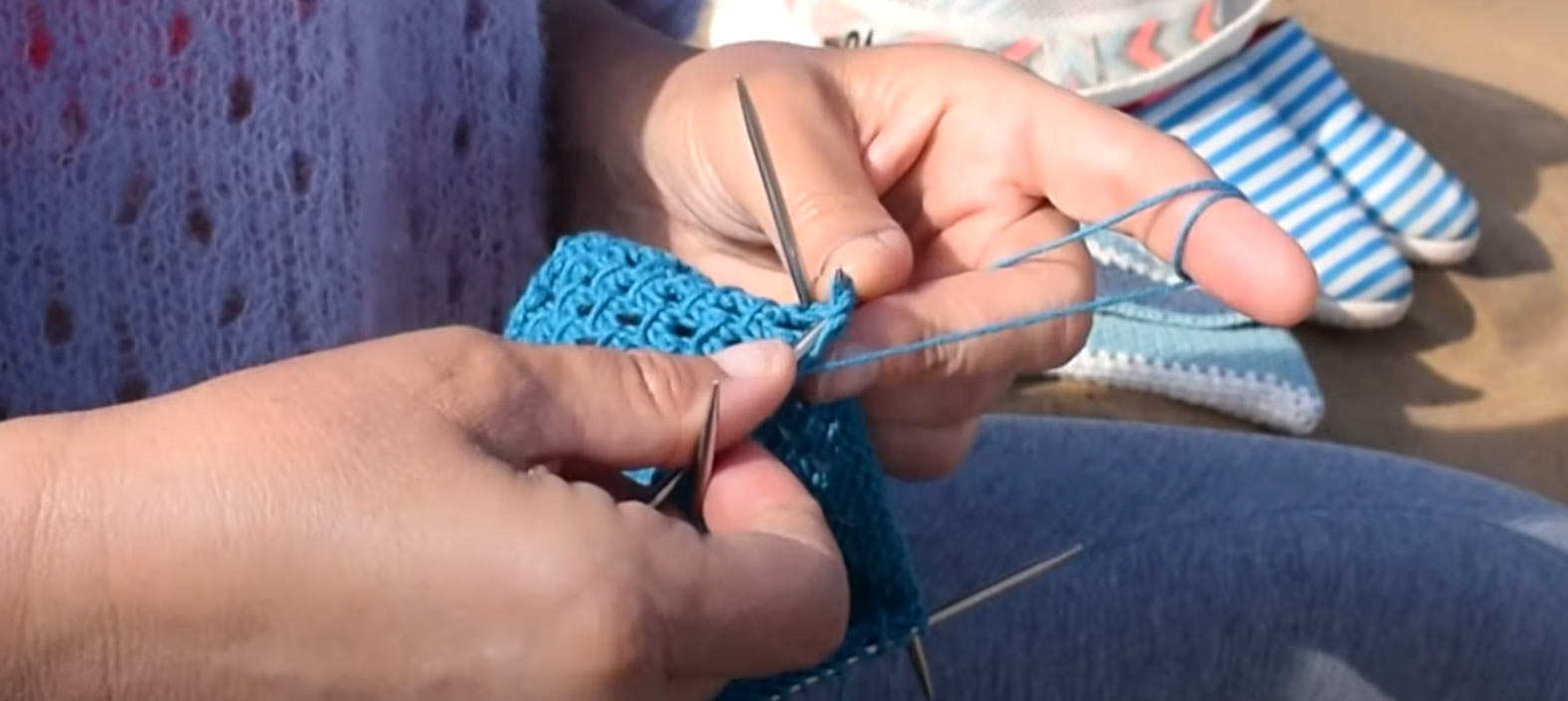Knitting in the round is the technique to create some seamless projects. Imagine socks, hats, leg warmers and so much more. The options for us knitters are - circular needles (fixed or interchangeable) in a length of 10 - 47" according to the project or a set of double pointed needles of 6 - 8″. Choosing your knitting needles will depend on your comfort, pattern designer and the project. Often, a knitting pattern will have you start your project on circular needles and after a few rounds, you may be instructed to knit with double-pointed needles. This may be due to the reason that the stitches are being stretched, or you need to make some decreases or for your comfort. Switching from circular to double-pointed needles is easy. Let’s take you through the steps to transfer your stitches.
Here are our step-by-step instructions:
STEP 1: Choose the number of DPNs
Your pattern may or may not tell you how many double-pointed needles to use. You need to decide, given on the needle length and stitches. You can make a circumference with three or four DPNs, using the 5th as the knitting needle. Using the whole set of five needles is the most common way of working a piece in the round.
STEP 2: Divide your Stitches evenly
Most patterns will tell you to “Divide your stitches evenly on DPNs.” For instance, say you have 40 stitches and will use 4 DPNs to hold your stitches then each needle will have 10 stitches. But, if you want to go ahead with 3 DPNs each needle will have 14, 13 & 13 stitches.
STEP 3: Make the Switch to DPN
Simply release the right-hand needle of your circular needles, and begin by knitting the appropriate number of stitches per needle on your first DPN.
Do the same for each needle and continue knitting this round until there are no more stitches left on your circular needle.

If you had stitch markers in the project and would like to use them on your double pointed needles too, then place them on the second to last stitch. Placing them at the last stitch means placing near the point. You will lose the stitch marker as they slip off the tip. You can very well go ahead without stitch markers as the yarn tail will indicate the start of the round. But then there are other reasons to. Our guide on using stitch markers in knittingwill walk you through.
These instructions work smoothly even if you are switching from circular needles used in the magic loop technique to the double points. The extra-long needle lengths used in the magic loop method for knitting even the smallest projects in the round won’t be a problem as you would be switching stitches from the needle tips.
The steps to switch from circular knitting needles to DPNs can also be done vice-versa. For example, if you have started a knitting pattern on double points but do not enjoy knitting or if the pattern instructs, you can switch too. In fact, it is easier to do so with one circular needle tip. You need to knit all stitches on the circulars and switch.
How to Choose between Circular and Double-Pointed Needles?

Many knitting projects and patterns leave the decision of choosing your knitting needles for the round seamless project. You can refer to our guide on using circulars vs double pointed needles.
Double-pointed knitting needles have been used for centuries to make seamless patterns. They work in a set of five, but you only knit with two needles at once. The needles come in options of 6″ & 8″. The 6-inch ones working great for socks, top of hats, mittens, etc. and 8-inch suiting sleeves, necklines, etc.
Circular knitting needles are only a century old. They are loved for the comfort of knitting in rounds and to work back and forth rows. Available in two varieties- fixed and interchangeable where the difference is the cord. The circular needle cords vary in lengths from 10″- 47″ while needle tips are 4″ & 5″. The 10″ works best for hats, socks, etc. while 32″ to 47″ circular needles are your best options for the magic loop technique.
While it’s fine to work with any of the two, many knitters opt for circular needles for heavier yarns. As it makes it much easier on the hands and wrists, as the cord between the needle tips carries most of the project. Hence the weight lies mostly on the lap. Plus, your work doesn’t slide off quite as easily as it might from DPN. There are only two points for the project to slide off, in comparison to the 3 or 4 DPNs and each of their two ends. Double points are preferred for carrying a very few number of stitches and move freely.
Here are two things to keep in mind when choosing double-pointed or circular needles for your project.
Project Circumference length
The length of the circumference of the project say for example is 25 inches then you can either choose a 10-inch circular needle or three DPNs of 6-inches. This will ensure that your stitches are not stretched.
Circular needles, especially the interchangeable ones has cords that can be changed for the right length to accommodate all stitches. With DPNs stitch passing is easier with its tips but then you may find your hands cramped or needles poking you.
Number of Stitches
Like the project of the circumference, the number of stitches also matter. For example if you have 50+ stitches of a sock weight or lace yarn then you would prefer needles that accommodate the stitches and help you see them clearly even if lightly stretched on circulars. Another example is 20 stitches of chunky weight yarn. DPNs work best for smaller number of stitches but the project will be quite heavy.
Ultimately, knitting is your craft and you choose that feels mindful to you. Some knitters find the many points a portable while many think the cord an issue. Keep your mind open for all prospects.
Now coming to the knitting needles, the Mindful Collection has double points and circulars. Stainless steel knitting needles with a unique, inspiring word are simply a blessing. DPNs, FCs, ICNs, and knitting needle sets assist with smooth knitting. Your projects will reflect the quality and the idea behind the range.
For knitting tricks and techniques, we invite you to follow our blog.












